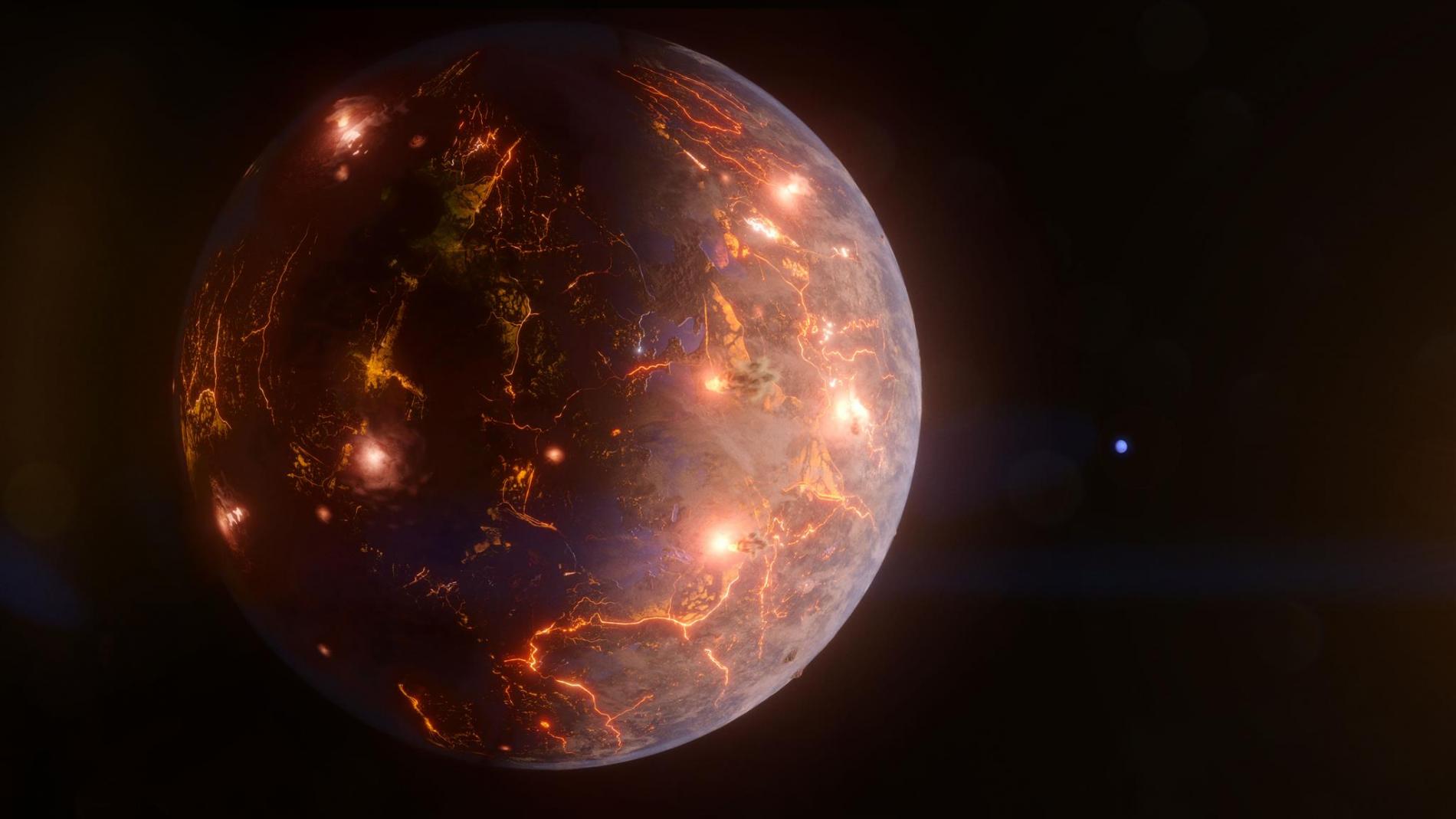A terrestrial-type planet found that could be covered with volcanoes
The Institute of Astrophysics of Andalusia (IAA-CSIC) is participating in the discovery of a third planet around the nearby star LP791-18. Slightly larger than our own, its gravitational interaction with the most massive planet in the system could generate intense volcanic activity
Two planets were already known to be orbiting the red dwarf star LP791-18, located just 90 light-years away: the rocky super-Earth LP791-18b, with a mass 20% greater than that of the Earth, and the mini-Neptune LP791-18c, a gaseous planet with about nine times the mass of the Earth. Today, the journal Nature reports the discovery of a third Earth-like planet, LP791-18d, whose orbit around the star brings it dangerously close to the minineptune. This produces a gravitational interaction that slightly deforms the newly found planet and heats its interior, possibly leading to widespread volcanic activity across its surface.
“The planet LP791-18d shows what is known as tidal lock, which means that the same side constantly faces its star", says Björn Benneke, a researcher at the University of Montreal who led the study. The day side is probably too hot for liquid water to exist on the surface, but the amount of volcanic activity that we suspect is occurring around the planet could support an atmosphere, which could allow water to condense on the night side.
During each orbit, minineptune c and terrestrial planet d pass very close to each other. Each approach produces a gravitational pull from the former on the latter, causing its orbit to draw a somewhat elliptical trajectory in which it deforms slightly each time it orbits the star. These deformations can create enough internal friction to heat up the planet's interior and produce volcanic activity, a phenomenon similar to that exerted by the planet Jupiter on its satellite Io, which holds the record for volcanic activity in the entire Solar System.
Planet d lies at the inner edge of the habitable zone, the region around a star where pressure and temperature conditions would allow liquid water to exist on a planet's surface. If the newly found planet is as geologically active as the science team suspects, it could maintain an atmosphere and temperatures could drop low enough on the planet's night side for water to condense on the surface.

“While the University of Montreal team was analysing observations with the Spitzer telescope (NASA), our team discovered the signal corresponding to the planet LP791-18d using our own planet-hunter software", says Francisco J. Pozuelos, a researcher at the Institute of Astrophysics of Andalusia (IAA-CSIC) involved in the work. “By processing the data from the TESS space telescope, our algorithm detected the signal, which had gone unnoticed, and we started an observation campaign with ground-based telescopes using the SPECULOOS telescope network and coordinating with the other teams involved in the discovery".
A big open question in astrobiology, the field that studies the origins of life, is whether tectonic or volcanic activity is necessary for the emergence of life: in addition to providing an atmosphere, these processes could move materials that would otherwise sink and become trapped in the crust, including those considered important for life, such as carbon.
"Planet c has already been approved for observation with the recently launched James Webb Space Telescope, and we believe that planet d is also an exceptional candidate for atmospheric studies", concludes Francisco J. Pozuelos (IAA-CSIC).
M. S. Peterson et al. "A temperate Earth-sized planet with tidal heating transiting an M6 star ". Nature, May 17, 2023.
Instituto de Astrofísica de Andalucía (IAA-CSIC)
Unidad de Divulgación y Comunicación
Silbia López de Lacalle - sll[arroba]iaa.es - 958230676
https://www.iaa.csic.es
https://divulgacion.iaa.csic.es

